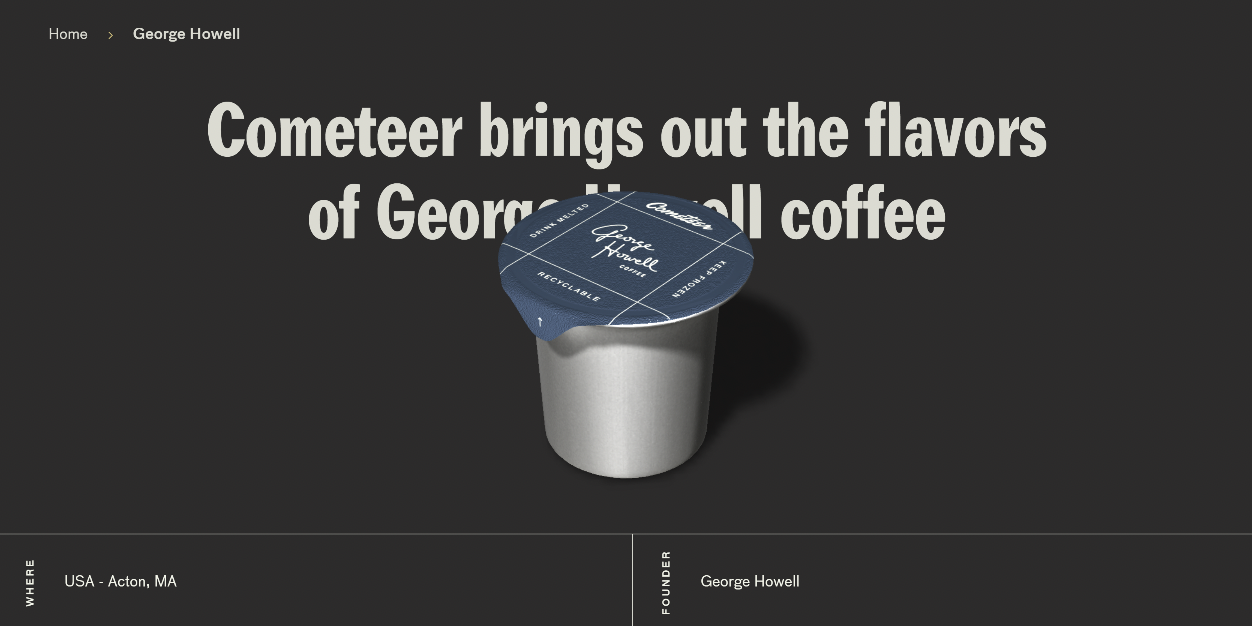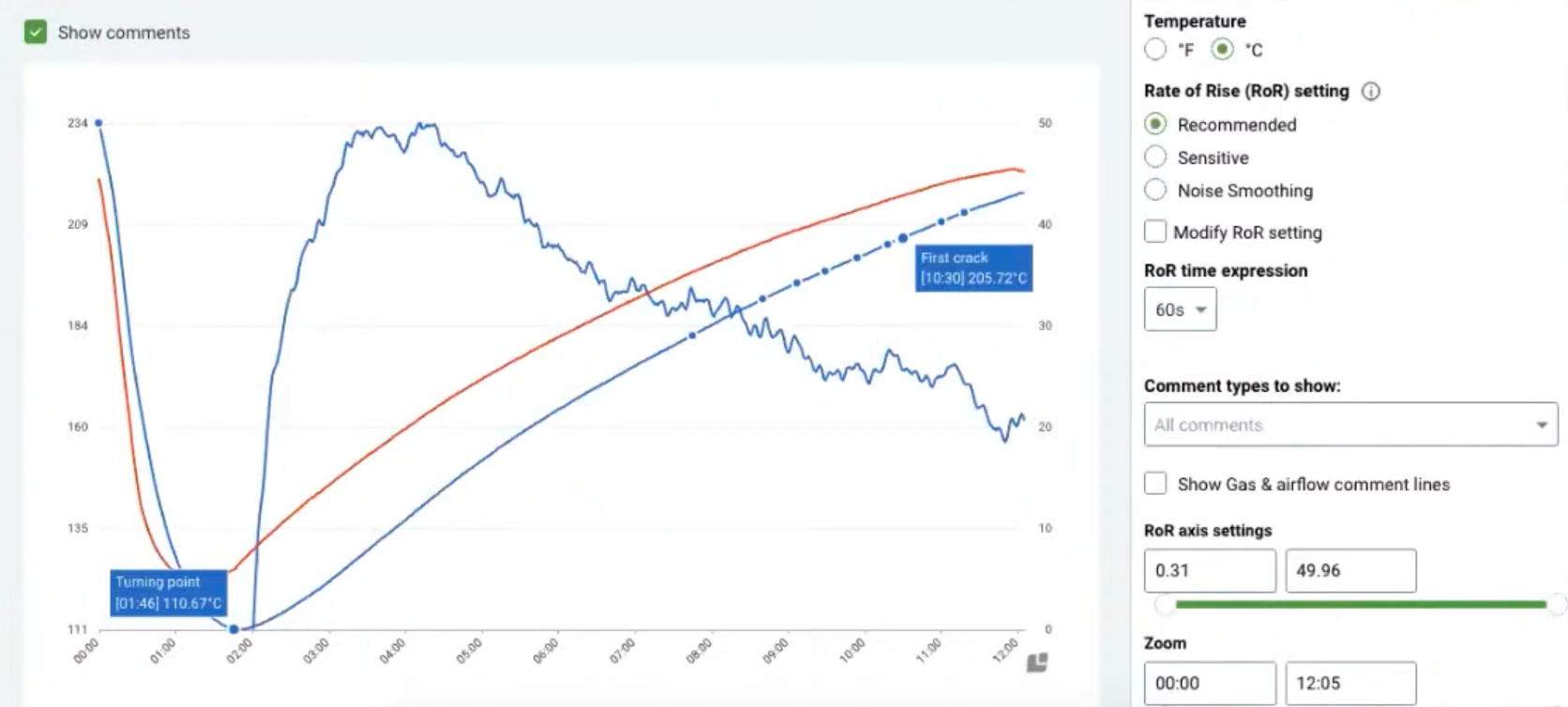Written by Nick Castellano
Day 1
Day 1 of the USA/Brazil Roaster Exchange saw Brazilian Danilo Lodi join the panel with George Howell and various members of George Howell Coffee. From tips on storing to distributing coffees, there were lots of important takeaways from this day.
The distribution of George Howell’s coffees are a key component to the sales and marketing strategies of how they present their coffees. Their cafes and websites are crucial platforms and channels for them to speak to their customers. Admittedly, the wholesale channel is an effective channel for distribution, profitability, and scalability but has not been the most effective for origin impact and seeking the highest-quality coffee.
A part of George Howell’s innovations has been his work with freezing coffee over the past 20 years. The art of freezing coffee has now been shown in George Howell’s capsules by Cometeer. These capsules contain ground coffee extract that were frozen immediately after being brewed. All that’s required to brew these coffees is for these grounds to be steeped in hot water. This innovation reaches consumers looking for convenience but also high-quality, fresh coffee.
George Howell has also found that green coffee can be frozen for multiple years and still hold its quality. However, George Howell has followed freezing recommendation temperatures from the food industry and doesn’t yet know how coffees react to different temperatures. When freezing these coffees, George Howell usually uses vacuum packs or GrainPros to store the coffee and still has coffees from 2013 that taste just as fresh. An important part to freezing for George Howell is to remove the coffees about 3-4 days before roasting, but not to open those packages until immediately before roasting. Noteworthy, if coffees are already aging, freezing will not stop it from aging; it will just slow it down.
George Howell recommendations to freeze roasted coffee:
- For roasters and cafes looking to freeze coffee, the recommendation is to use vacuum sealed bags and to quantify each pack to be enough for one brew or roast and nothing more than that.
- For home brewers, the recommendation is to use small containers or zip-lock bags and push the air out. Take it a step further and freeze one bag/container per brew.

Day 2
Day 2 of the USA/Brazil Roaster Exchange saw Brazilian Hugo Rocco from Moka Club join the panel with Ian Logan from Intelligentsia Coffee. From Intelligentsia’s multiple cafes to Brazilian coffees being the bulk of their coffees, Ian Logan gave a breakdown of Intelligentsia’s roasting operation in Los Angeles.
Intelligentsia Coffee’s main sales channels are via their cafes, wholesale, and online retail, and among that 60% of their coffees are Brazilian, which also makes up 75% of the base component for their espresso. Given Intelligentsia’s large cafe chain, each region has its own uniqueness and touch specific to that cafe. On freshness, Ian says that their cafes usually try to brew their coffees and pull their shots about 10-14 days off roast.
Regarding Brazilian coffees, Intelligentsia uses a bulk of their Brazilian coffees in blends. Ian says that the season usually depends on what is a part of their blend. In the summer, they’ll add origins that are more fruit-forward whereas in the winter they’ll add origins that are more round with chocolate and caramel notes. However, when roasting their Brazilian coffees, they can roast their Brazilian coffees quicker than what they used to do. Ian says, “Our Brazilian coffees are more dense so I can be more aggressive with it and pull more out of the coffee.”
From quality control to roasting, Intelligentsia uses Cropster’s Roasting Intelligence to understand and manipulate their Brazilian profile to improve their profile. They then use Cropster Cup to analyze and evaluate the flavor notes they get out of each profile and its improvements.

Day 3
Day 3 of the USA/Brazil Roaster Exchange saw Brazilian Boram Um from Um Coffee Co join the panel with Dakota Graff from Onyx Coffee Lab. Dakota’s tour of Onyx’s HQ in Arkansas gave viewers a visual understanding of the branding they use in their cafes but also the technologies they used to maintain a brand known for roasting the highest-quality coffees.
Onyx’s quality control process is rigorous and includes the use of Cropster to manage the various samples that are evaluated and samples roasted at origin and at their roastery. Dakota explains how he uses Cropster’s sample section to enter new samples, evaluate those samples via Cropster’s cupping sessions, and either accept or reject those samples. By that point, Onyx can go into their buying phase of the coffees or continue providing feedback with Cropster analyses to their origin partners to improve during the current or next harvest. An interesting feature that has helped Dakota and Onyx massively has been green inventory management. Because their facility does not hold all of their coffees, Dakota can remotely manage their external inventory in other warehouses directly from the same Cropster account.
A part of what makes Onyx interesting is their huge focus on high-quality coffee and their investment in their training infrastructures. Dakota mentions how Onyx aims to hold a quality threshold of 86 points or higher. Along with this focus in quality, they complement this in their cafes by rigorously training their baristas.
If these roasters and experts intrigued you and are interested in applying Cropster to your roastery, reach out or book a demo here!




